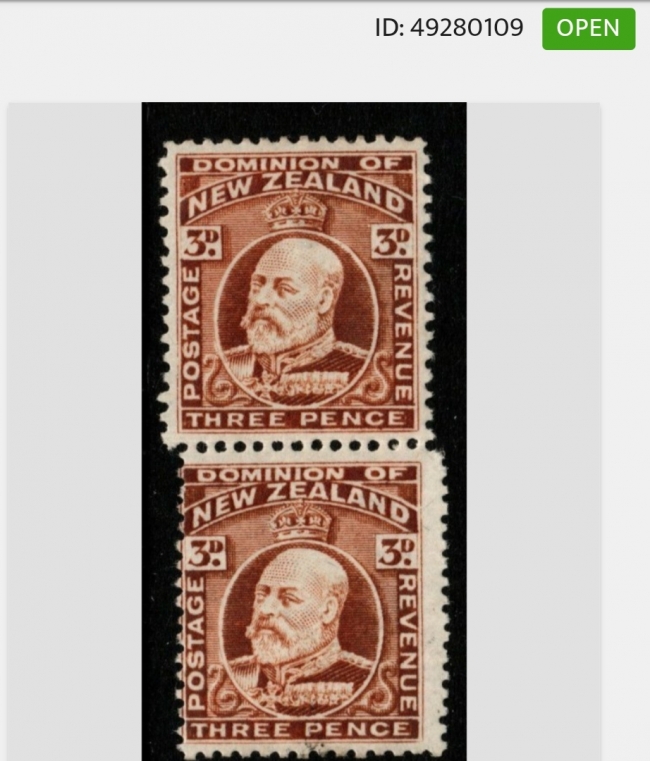What the....?.
Ok, I've seen a lot of things in the world of philately, not nearly everything, but I've seen a lot of things, and I ain't never seen this.

This is StG New Zealand 401a, currently offered for bidding by a good dealer in England. What is it, how'd it happen, how often? I'm fuddled...

This is StG New Zealand 401a, currently offered for bidding by a good dealer in England. What is it, how'd it happen, how often? I'm fuddled...


Comments
I don't understand "StG New Zealand 401a".
Phil's got a real mystery here. I'd need to know more about the perforation machine that perfed these stamps to understand how this freak could occur.
This is a real mystery.
My other inclination is to say faked... but I don't know enough about these issues if there is base material for such a possibility, but the fact that it has a catalog listing (apparently Gibbons 401a) suggests there is a real explanation for this.
"This was probably caused by a misalignment of a comb perforator (shaped like one) that perforates 3 sides of a stamp at a time."
But great to have an answer that is understandable.
But what was really interesting was the very last listing under this catalog number. Scott 87h, with no value given, is listed as having perforations of 12 x 12 x 12 x 11. This may have answered where this unusual perforation variety came from and why it is not common (thus no value given). This is the only time I can remember coming across the perforations for a stamp having a listing for all four sides.
I was using a 2022 edition Scott Classic Catalogue.
Open you Scott Classic Catalogue and take a look at Bosnia and Herzegovina, The Austrians were the Hands Down Super Stars of Perforation Varieties.
I have a bunch from Bosnia to list, but just haven't gotten around to working on them. This gives me something to look forward to. Every area seems to have it's own quirks.